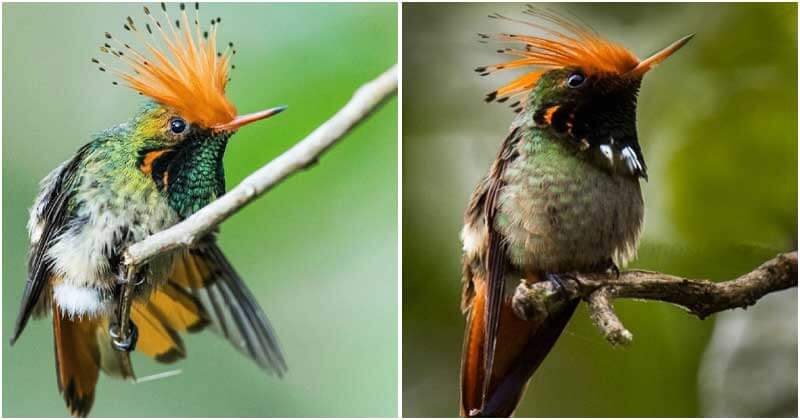The world of birds is fantastic! It has many birds that are too perfect to be true. Some people even think that these flying creatures jump out from fairy books. Not only is their plumage incredibly beautiful but these birds also have one-of-their-kind features. Just look at photos of the rufous-crested croquette below to verify our words.

Image Credits: Instagram/tropicalbirding
The rufous-crested coquette is tiny and chubby birds like other members of the hummingbird family. But this species makes a name for itself with a brilliant orange crest tipped with black and iridescent green plumage.

Image Credits: Francesco Veronesi / CC BY-SA 2.0
The green color of its coat comes in different shades. It’s darker green on the throat, along with small pointed white feathers. Meanwhile, the belly and back of this hummingbird is a light iridescent green.

Image Credits: Instagram/wildfrank_natureshot
Take a look at the tail, the rufous-crested coquette has brown, orange, and green feathers on its rump. This feature surely makes it more conspicuous whenever they appear.
Let’s watch the beauty of this bird in the video below!
Like many other species, the female rufous-crested croquette looks duller than the male. She doesn’t have green throat and orange crest.

Image Credits: Instagram/lindsay_naturephotos
This bird is endemic to the tropical slopes of pacific South America. They distribute in the Pacific and Caribbean mountainsides of Peru, Bolivia, Colombia, Ecuador, Panama, and Costa Rica, with at least one sighting in western Brazil.

Image Credits: Instagram/francescveronesi
The main diets of these striking hummingbirds are nectar. Their food sources are colored, scented small flowers on trees, herbs, shrubs, and epiphytes. These birds, however, sometimes eat insects and spiders.

Image Credits: Instagram/best_bird_shots
With this eating habit, the female rufous-crested croquette prefers living in subtropical or tropical lowland and montane forests at altitudes of 500m – 1,900m above sea level.

Image Credits: Instagram/julioc.telloalvarado
When the breeding season begins, female birds use soft plant fibers, green moss, animal air, and feather-down to build their cup-shaped nest. This nest is placed in bushes, shrubs, or small trees. They then lay 1 egg in their nest and incubate them. The female continues to feed the hatchlings for about 20 days until fully fledged.

Image Credits: Instagram/theperutravelexperience
Can’t keep your eyes off these flying gems? Just share this article with your family and friends. They will burst out “wow”. Believe us!
H/T: One Big Birdcage
